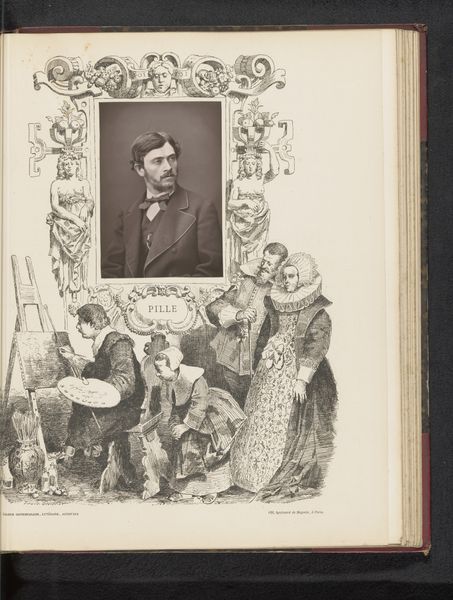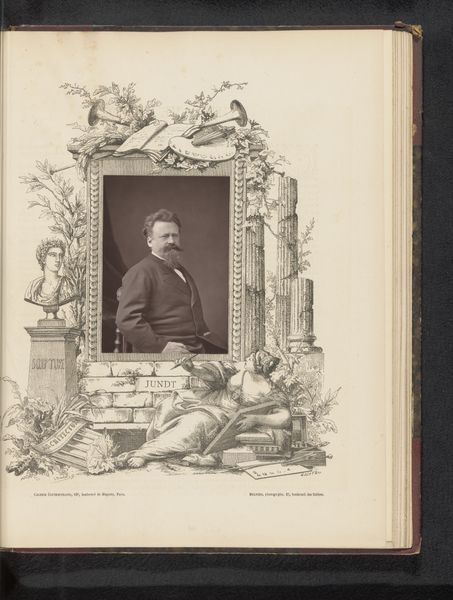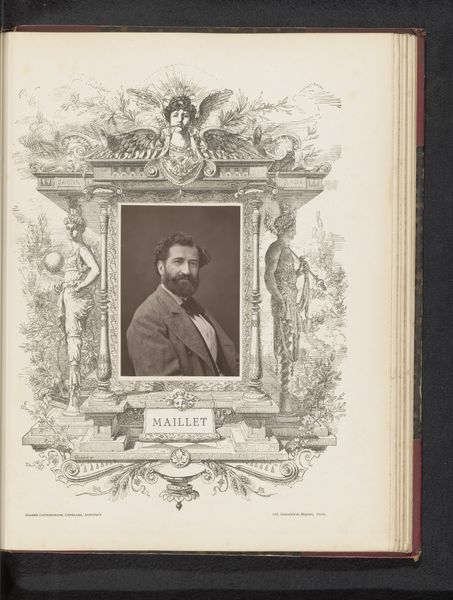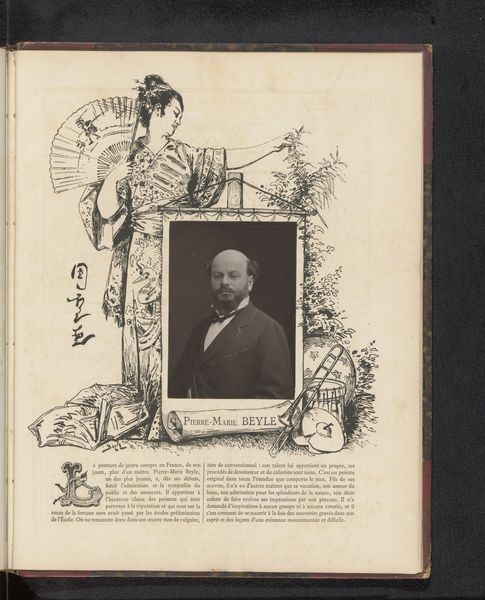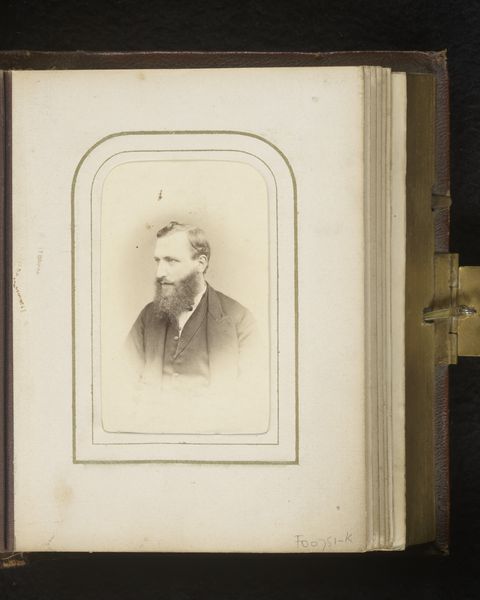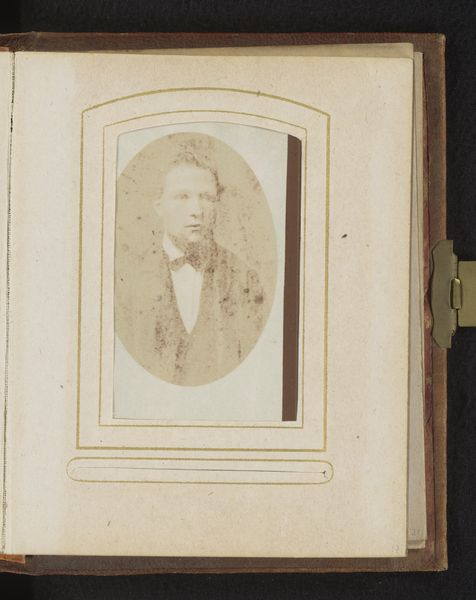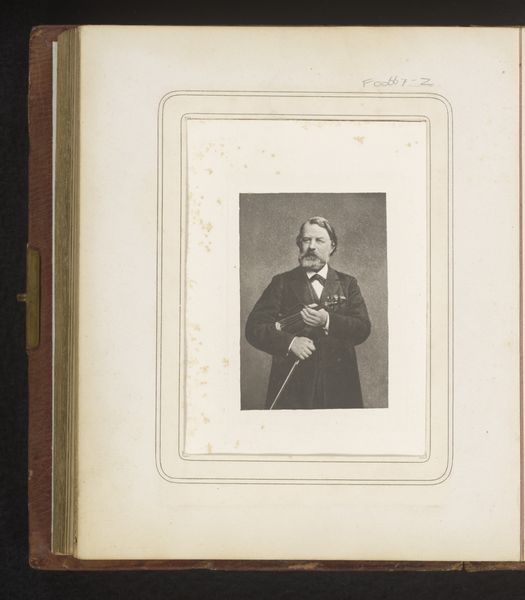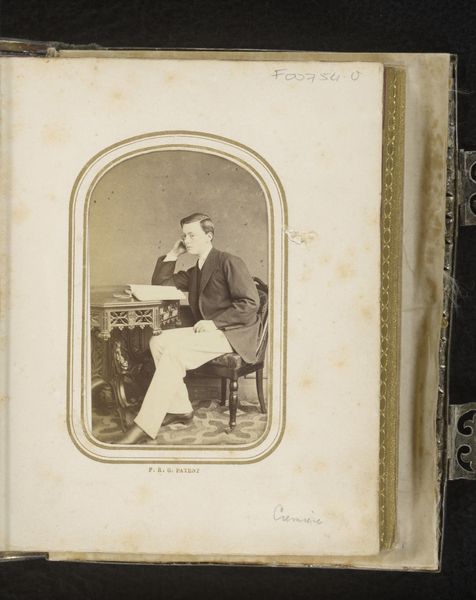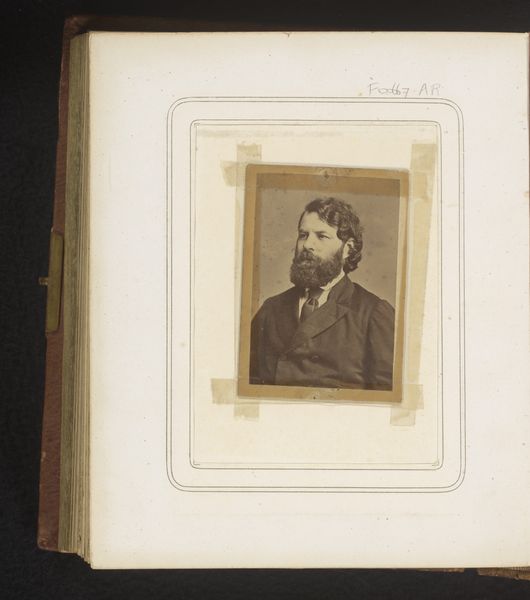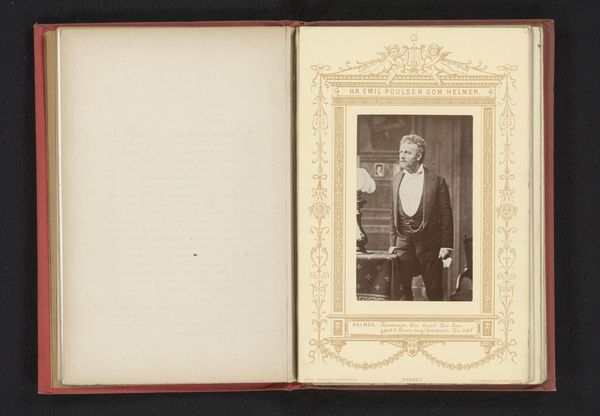
drawing, paper, engraving
#
portrait
#
drawing
#
paper
#
coloured pencil
#
sketchbook drawing
#
genre-painting
#
history-painting
#
academic-art
#
sketchbook art
#
engraving
Dimensions: height 312 mm, width 229 mm
Copyright: Rijks Museum: Open Domain
Editor: We are looking at an artwork titled "Portret van Pierre-Paul-Léon Glaize," made before 1876, and the medium includes drawing, paper, colored pencil, and engraving. It appears to be an image of Pierre-Paul-Léon Glaize surrounded by characters he painted into historical tableaux. What statements can this collection of imagery make, and what can it tell us about this artist? Curator: That's an intriguing question. The portrait within the ornamental frame is interesting when viewed as part of this bound volume; it is a reminder that artists, particularly during this period, were deeply enmeshed within and actively contributing to prevailing historical narratives. Given his documented background in genre and history paintings, the portrait operates less as an objective depiction and more as an endorsement of Glaize’s own social standing, wouldn't you agree? Editor: Yes, the sketch book's framing of the photograph emphasizes a construction of self and artistic reputation rather than documentation of identity. I also wonder, how does the very deliberate inclusion of images from Glaize’s paintings create another, perhaps secondary narrative? Curator: Precisely! The sketch book essentially positions him as a participant, even an author, of these dominant historical and social scripts, which raises essential questions about agency, perspective, and representation. Consider that historical paintings often catered to specific socio-political agendas. Can this be construed as a strategy by Glaize to situate himself, and thus his artwork, within the halls of power and reinforce the ideologies that those powers propagated? Editor: Absolutely. Viewing this page through that lens makes it impossible not to think of what is excluded and who might be missing from the narrative Glaize is carefully crafting. I will remember this way of viewing art from now on.
Comments
No comments
Be the first to comment and join the conversation on the ultimate creative platform.
